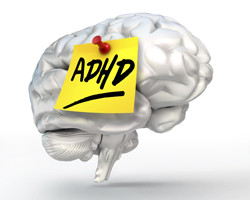Brain iron levels in ADHD patients
ADHD is a behavioural disorder manifested in childhood with symptoms that may persist in adulthood. As the name implies, individuals with ADHD struggle to pay attention on activities and have poor impulse control and hyperactivity. They also tend to perform poorly in academic and professional pursuits and are more likely to engage in criminal behaviour than individuals without ADHD. The EU-funded project BRAIN IRON IN ADHD was initiated to understand if brain iron deficiency plays a role in ADHD. Scientists assessed brain iron levels along with serum ferritin levels for greater accuracy, as ferritin values (a measure of iron quantity in the blood) do not fully reflect brain iron levels, which are supposed to be involved in ADHD. To measure brain iron levels, a novel neuroimaging technique (“multiple field correlation”) was employed. Project members carried out studies on children at two institutes — one in the United States and one in Italy. Serum ferritin and brain iron levels were measured in children with and without ADHD. In the US study, it was found that children with ADHD had significantly lower brain iron levels than children without ADHD. The Italian study investigated the possible consequences of brain iron deficiency. More specifically, it focused on the association of brain iron levels to brain functioning and sleep quality/quantity, using magnetic resonance imaging, electroencephalogram, somatosensory evoked potentials and polysomnography. Significant correlation was found between brain iron levels and the number of periodic movements in sleep. This suggests that low brain iron levels can disrupt sleep, which, in turn, contributes to cognitive deficits and further aggravates ADHD symptoms. Of note, no differences were found in serum ferritin levels in children with and without ADHD in both studies. ADHD affects around 5 % of children globally and study results suggest that about 15% of such children have brain iron deficiency. Alleviation of ADHD symptoms through early iron supplementation has the potential to benefit this subset of children and vastly improve their quality of life. The effects of iron supplements during pregnancy or infancy to prevent ADHD will need to be investigated in future studies.
Keywords
Attention-deficit/hyperactivity disorder, risk factors, iron deficiency, brain iron, serum ferritin, electroencephalogram, somatosensory evoked potentials, polysomnography, supplements



